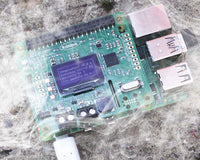 This Kitronik University resource is part of the BBC micro:bit partnership and will be an in depth tutorial into building a collision detection buggy using the BBC micro:bit and the expansion connector. We are currently working on this project, it will be available by the 7th September. In the meantime enjoy this sneak preview!
This Kitronik University resource is part of the BBC micro:bit partnership and will be an in depth tutorial into building a collision detection buggy using the BBC micro:bit and the expansion connector. We are currently working on this project, it will be available by the 7th September. In the meantime enjoy this sneak preview!  This project is currently at the prototype stage. We've got some early pictures to give you an idea of what it might look like. Students will build a collision detection buggy which utilises the built in accelerometer in the BBC micro:bit and the expansion connector. The buggy consists of two motors and wheels connected to a motor driver board, which in turn connects to the BBC microbit via an expansion connector. It is powered by 4 AA batteries, which are housed in a battery holder. Everything is then mounted on a purpose designed laser cut acrylic chassis.
This project is currently at the prototype stage. We've got some early pictures to give you an idea of what it might look like. Students will build a collision detection buggy which utilises the built in accelerometer in the BBC micro:bit and the expansion connector. The buggy consists of two motors and wheels connected to a motor driver board, which in turn connects to the BBC microbit via an expansion connector. It is powered by 4 AA batteries, which are housed in a battery holder. Everything is then mounted on a purpose designed laser cut acrylic chassis.
Prototype of the collision detection buggy.
The buggy works by detecting a sudden deceleration which occurs when the buggy collides with an object, and then causes the buggy to reverse slightly, turn and then move off again. The laser cutting files will be made available to download, as well as the design files for the PCB for anyone wishing to make their own. Check back regularly for complete step by step instructions.©Kitronik Ltd – You may print this page & link to it, but must not copy the page or part thereof without Kitronik's prior written consent.








2 comments
Rob Haywood
Hi Tim, Ha, yes it would take a tumble! Rob
Tim Brotherhood
We talked at the D&T summer school and I found what you are doing very interesting! Just a though, what if the buggy reaches a step down? Feedback from the accelerometers will be too late to avoid a tumble! ;-) Keep up the great work. :)